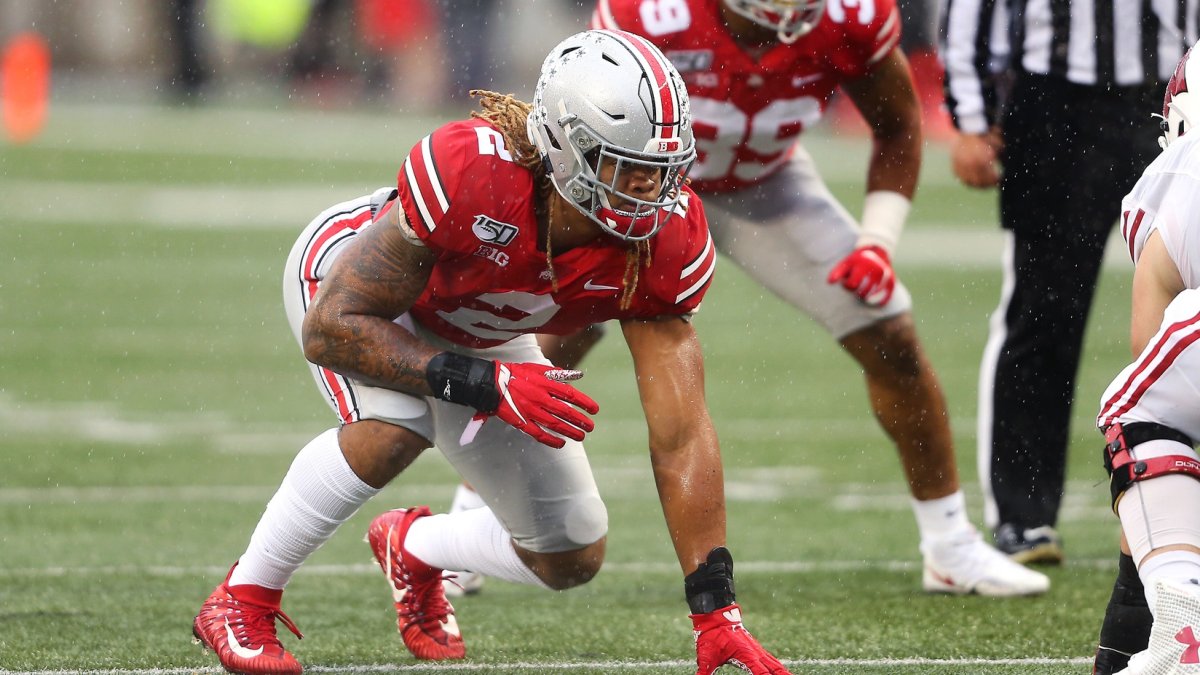NFL GMs often describe drafting the “best player available” — deferring to their draft boards and letting the draft come to them. But the concept of “BPA” is fairly trite and actually absurd in practice. Adhering to such a standard is how you draft a kicker in the second round or a running back No. 2 overall. In an abstract sense, both may have been the best talents relative to their positions at that moment in the draft. But football isn’t played in the abstract, and the very real concept of positional value cannot be ignored when building a team. While having a complete roster looks great on paper, the fact of the matter is that not all positions are created equal.
[Editor’s note: Subscribe to PFF ELITE today to gain access to PFF’s Premium Stats and new Player Grades experience in addition to the 2020 NFL Draft Guide, 2020 Fantasy Rookie Scouting Report, PFF Greenline, all of PFF’s premium article content and more.]
Let's take a look at the difference between “best player available” and what we might call “best value available” when it comes to hitting on NFL draft picks.
Wins Above Replacement (WAR)
A few years back, our data science team took on the challenge of quantifying the value of the contributions each player on the football field makes over the course of a season based off of PFF’s play-by-play grading. They looked at how positive and negative performance impacts scoring and, ergo, winning in the NFL.
The result was PFF’s Wins Above Replacement metric (WAR). WAR has been a nearly universally accepted concept in baseball, but nothing had been attempted in the NFL. The basic gist is to try to measure how negatively a team would be affected should a certain player be lost, causing the franchise to go to the street to find a replacement. The average of the top 10 players at each position in the NFL from 2019 can be seen below.
| Position | Top-10 WAR Average |
| QB | 2.5134 |
| WR | 0.701 |
| S | 0.6039 |
| CB | 0.5172 |
| TE | 0.3426 |
| IOL | 0.3212 |
| OT | 0.2968 |
| ED | 0.2783 |
| LB | 0.2762 |
| RB | 0.2166 |
| DI | 0.1868 |
Another way to look at this table is to consider the best-case scenario for any top draft pick. It’s also why we say that the market for top QB prospects completely skews any trade value chart. The value they bring to the table is three times that of any other position. Positions toward the bottom are best to avoid early in the draft, as they simply can’t bring the return on investment.
Salary Cap Implications
Even if you're skeptical of PFF's WAR metric — or point to certain teams valuing certain positions more than others — you can’t reject the very real salary cap implications of drafting certain positions. For the first four years of a rookie's career, a player's salary is dictated solely by his draft slot, meaning that if you draft a punter first overall, you just made him the highest-paid punter in NFL history. This aspect of positional drafting is arguably even more important than WAR because hitting on cost-controlled rookies at high-paid positions frees up space to add more talent elsewhere. The following is the average per year salary of the 10 highest-paid players at each position in the NFL.
| Position | Top-10 Salary APY |
| QB | $31,988,400 |
| ED | $18,867,133 |
| WR | $18,052,100 |
| DI | $17,401,867 |
| OT | $16,250,000 |
| CB | $14,524,333 |
| LB | $13,254,000 |
| IOL | $12,827,350 |
| S | $12,633,200 |
| RB | $10,461,244 |
| TE | $8,720,040 |
Considering this from a draft perspective, it’s important to look at this chart in tandem with how much respective picks are slotted to make. The chart below shows the average per year salary of picks from the 2020 draft.
| Pick | APY |
| 1 | $9,047,537 |
| 2 | $8,640,900 |
| 5 | $7,568,859 |
| 10 | $4,925,730 |
| 15 | $3,798,240 |
| 20 | $3,336,153 |
| 25 | $3,132,838 |
| 32 | $2,705,394 |
If you draft an interior offensive lineman, safety, running back or tight end at the top of the draft, you’re basically already paying him like a top-10 player at his position. The inherent risk that comes with the draft pick then likely outweighs any cap savings you’d see by hitting on that pick. On the other hand, if you draft a quarterback, receiver or edge defender early in the draft and he hits, you’re paying less than half of what you’d have to pay for a good player on the open market. That risk has to be weighed alongside the certainty of one’s evaluation. Your “best player available” may not be close to the real “best value available” — and it’s value that wins championships.
While there’s no single way to build a winning franchise, the goal of PFF’s analytics is to try to exploit market inefficiencies in team-building whenever possible. By fully integrating the concept of positional value into one’s draft board — something that is 100% already being done by teams around the league — there’s a high likelihood that you’ll get a greater return on investment in the long run.



 © 2025 PFF - all rights reserved.
© 2025 PFF - all rights reserved.